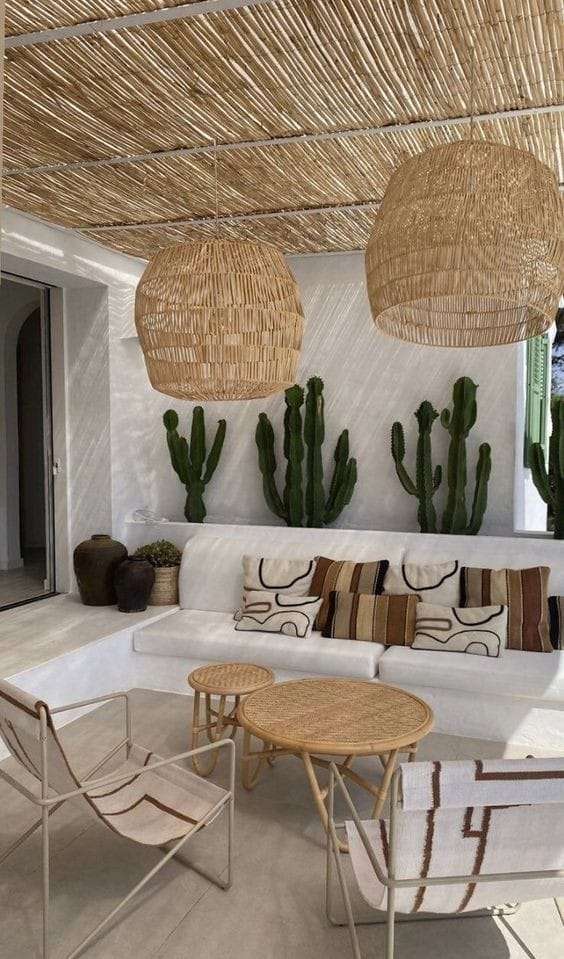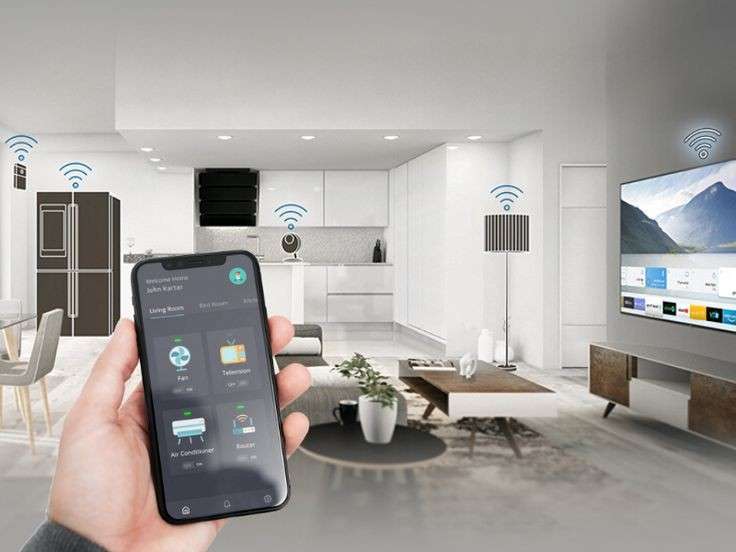At Scale & Structure, we believe that great design doesn’t just look good—it should also contribute to a healthier planet. As the demand for sustainable living spaces continues to grow, incorporating eco-friendly materials in interior design has become more important than ever. The materials we choose for our homes have a lasting impact on both the environment and our well-being. By selecting sustainable options, we can create beautiful interiors that minimize environmental harm, promote health, and support sustainable practices.
In this blog post, we’ll explore some of the most popular eco-friendly materials for interior design, highlighting their benefits and how they can be used to create stunning, sustainable living spaces.

1. Bamboo: A Fast-Growing, Renewable Resource
Bamboo is one of the most eco-friendly materials available today. Known for its fast growth (some species can grow up to 3 feet per day), bamboo is a highly renewable resource. Unlike hardwood trees, which can take decades to mature, bamboo reaches full growth in just 3-5 years, making it a highly sustainable option.
Bamboo is incredibly versatile and can be used for everything from flooring and furniture to wall panels and countertops. It’s durable, moisture-resistant, and can be processed into a variety of textures and finishes that complement any interior style.
Benefits of Bamboo:
- Fast-growing and renewable
- Strong and durable
- Biodegradable
- Requires less water and pesticides compared to traditional timber
At Scale & Structure, we love incorporating bamboo into our designs as an alternative to wood, creating beautiful, eco-conscious spaces without sacrificing style or functionality.
2. Reclaimed Wood: Giving New Life to Old Materials
Reclaimed wood is salvaged from old buildings, barns, factories, and other structures that are being torn down or renovated. Rather than letting these materials go to waste, reclaimed wood is repurposed to create beautiful and unique pieces for interior spaces. Whether used for flooring, accent walls, furniture, or shelving, reclaimed wood has a rich history and character that new wood simply cannot replicate.
By choosing reclaimed wood, you’re helping reduce the demand for newly harvested timber, which in turn helps preserve forests and reduces the carbon footprint associated with logging and transportation.
Benefits of Reclaimed Wood:
- Reduces waste by repurposing old materials
- Provides a unique, rustic aesthetic
- Reduces the need for new timber, protecting forests
- Often has a longer lifespan due to its age and durability
At Scale & Structure, we incorporate reclaimed wood into many of our projects to add warmth, texture, and a sense of history to spaces while staying true to our commitment to sustainability.
3. Cork: Natural, Renewable, and Versatile
Cork is another sustainable material gaining popularity in interior design. Made from the bark of cork oak trees, cork is harvested every 9-12 years without harming the tree. It’s a renewable resource that is both biodegradable and recyclable, making it an excellent choice for eco-conscious interiors.
Cork is naturally resistant to mold, moisture, and fire, making it an ideal material for flooring, wall coverings, and even furniture. Its unique texture and warm tones can add depth and style to any room.
Benefits of Cork:
- Renewable and biodegradable
- Naturally resistant to mold and moisture
- Soft and comfortable underfoot (great for flooring)
- Provides natural insulation, both acoustically and thermally
Cork’s versatility and sustainability make it a favorite at Scale & Structure. Whether it’s used for a cork accent wall or flooring, it adds a unique touch to any interior while remaining environmentally friendly.
4. Recycled Glass: Beautiful and Sustainable
Recycled glass is an excellent example of how eco-friendly materials can still be beautiful and stylish. Glass is infinitely recyclable, meaning it can be reused over and over without losing quality. When recycled glass is used in countertops, tiles, and decorative accents, it helps reduce the environmental impact of new glass production.
Recycled glass tiles, for example, come in a wide variety of colors, shapes, and finishes, making them a perfect choice for creating stunning mosaics or backsplashes in kitchens and bathrooms. Recycled glass countertops are also gaining popularity, offering a durable and eco-friendly alternative to traditional stone or quartz.
Benefits of Recycled Glass:
- Made from recycled materials, reducing waste
- Offers unique, colorful, and textured finishes
- Durable and easy to maintain
- Low environmental impact in production
At Scale & Structure, we love using recycled glass to add a touch of sophistication and sustainability to any space. Whether as a countertop, backsplash, or decorative element, recycled glass is a stylish, eco-friendly choice.
5. Natural Stone: Timeless, Durable, and Low-Maintenance
Natural stone, such as granite, marble, and limestone, has been used in interior design for centuries, and for good reason. These materials are not only beautiful but also incredibly durable. When sourced responsibly, natural stone can be an eco-friendly option for countertops, flooring, and wall cladding.
Stone is a natural material that requires minimal processing compared to synthetic options, making it an environmentally responsible choice. Additionally, its longevity and low maintenance make it a sustainable option for high-traffic areas that will stand the test of time.
Benefits of Natural Stone:
- Long-lasting and durable
- Low maintenance (resists wear and tear)
- Timeless aesthetic appeal
- Requires little energy to manufacture compared to synthetic alternatives
Natural stone adds elegance and strength to any space, and at Scale & Structure, we recommend it for those looking to invest in a timeless, sustainable material.
6. Hemp: A Sustainable Alternative for Textiles
Hemp is one of the most sustainable fabrics available today. It’s made from the fibers of the hemp plant, which requires very little water, pesticides, or synthetic fertilizers to grow. Hemp fabric is durable, breathable, and naturally resistant to mold and mildew, making it an ideal choice for upholstery, bedding, and textiles.
Hemp can also be processed into a variety of textures, from soft, luxurious fabrics to rougher, more rustic finishes. With its low environmental impact and versatility, hemp is a top choice for sustainable interior design.
Benefits of Hemp:
- Requires fewer resources to grow compared to cotton
- Biodegradable and recyclable
- Naturally resistant to mold and mildew
- Durable and breathable
At Scale & Structure, we incorporate hemp fabric in furniture upholstery, curtains, and bedding to create eco-friendly interiors that are both functional and stylish.
7. Low-VOC Paints: Healthier Choices for Your Home
Volatile Organic Compounds (VOCs) are harmful chemicals found in many paints, varnishes, and finishes that can contribute to indoor air pollution and pose health risks. Low-VOC or zero-VOC paints, on the other hand, contain fewer or no harmful chemicals, making them a healthier choice for both the environment and the people who live in the space.
By opting for low-VOC paints, you can create a beautiful, healthy home without sacrificing the quality or finish of your walls, ceilings, and trim.
Benefits of Low-VOC Paints:
- Fewer harmful chemicals, improving indoor air quality
- Better for the environment
- Available in a wide range of colors and finishes
- Safe for children and pets
At Scale & Structure, we choose low-VOC paints for all of our projects to ensure that the interiors we create are as healthy and sustainable as possible.
8. Conclusion: Creating Sustainable Interiors with Eco-Friendly Materials
The materials we choose for our interiors play a crucial role in the environmental impact of our homes. By opting for eco-friendly materials such as bamboo, reclaimed wood, cork, recycled glass, and low-VOC paints, we can create sustainable, beautiful spaces that contribute to a healthier planet.
At Scale & Structure, we are committed to helping our clients make environmentally conscious decisions while still achieving the design of their dreams. By incorporating sustainable materials into your home, you can create a space that is not only stylish and functional but also kind to the environment.
Ready to make your space more sustainable? Contact Scale & Structure today, and let’s work together to create an eco-friendly, beautiful home that aligns with your values.



